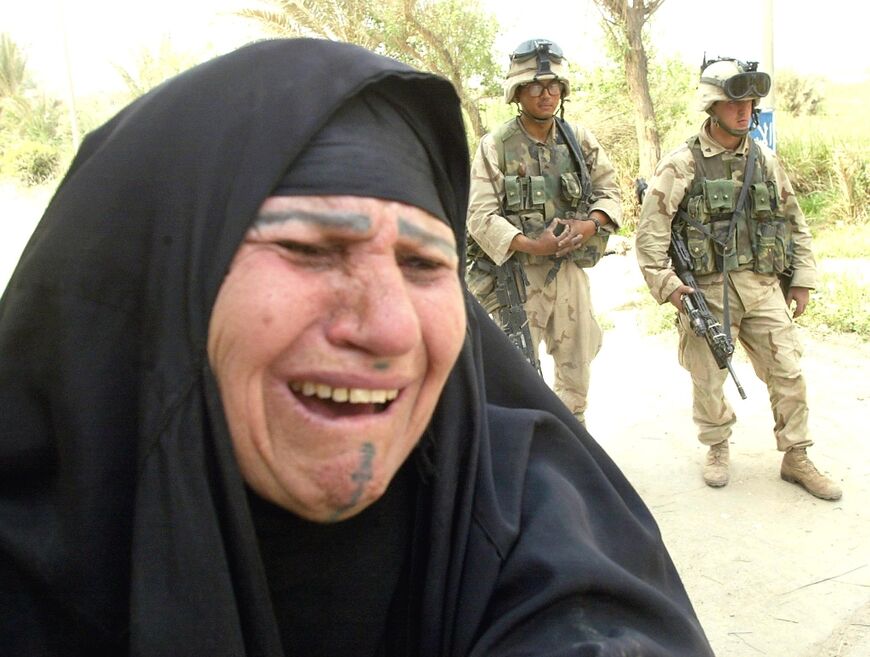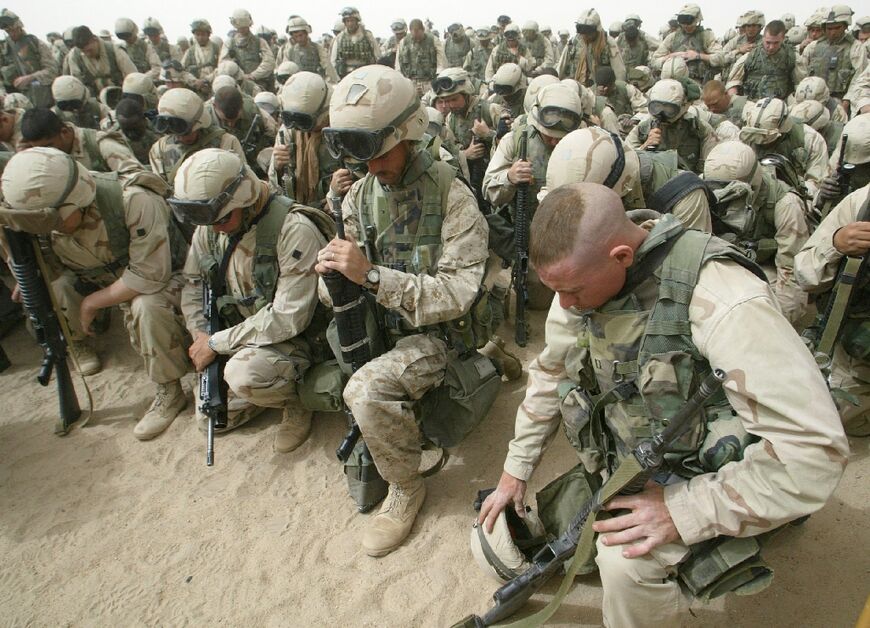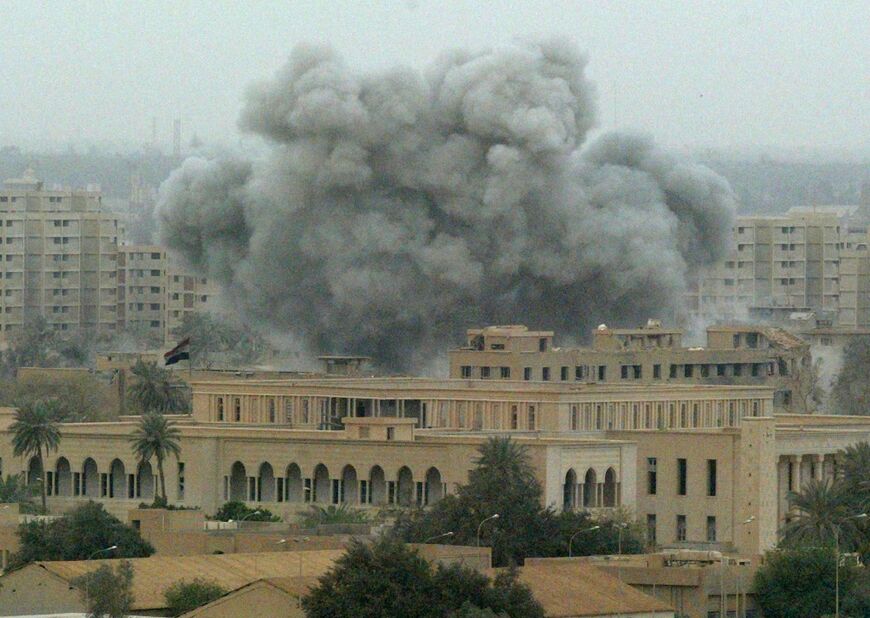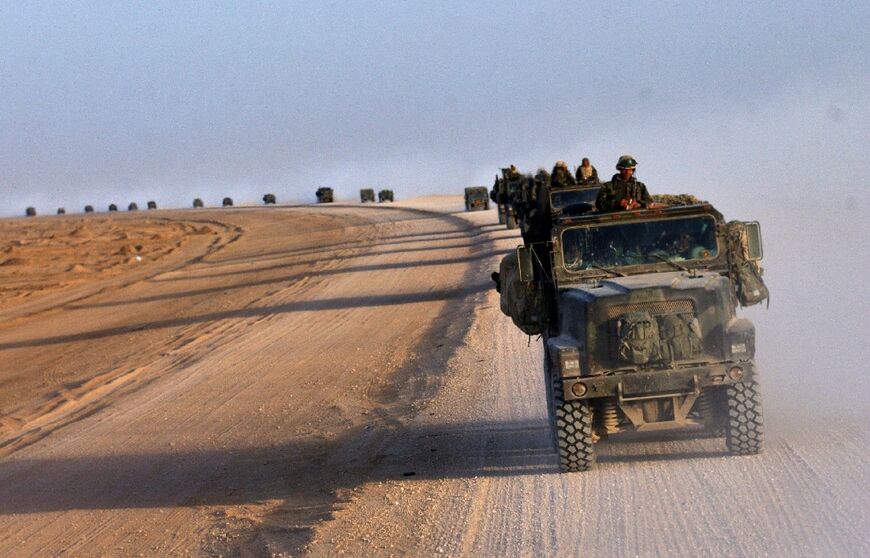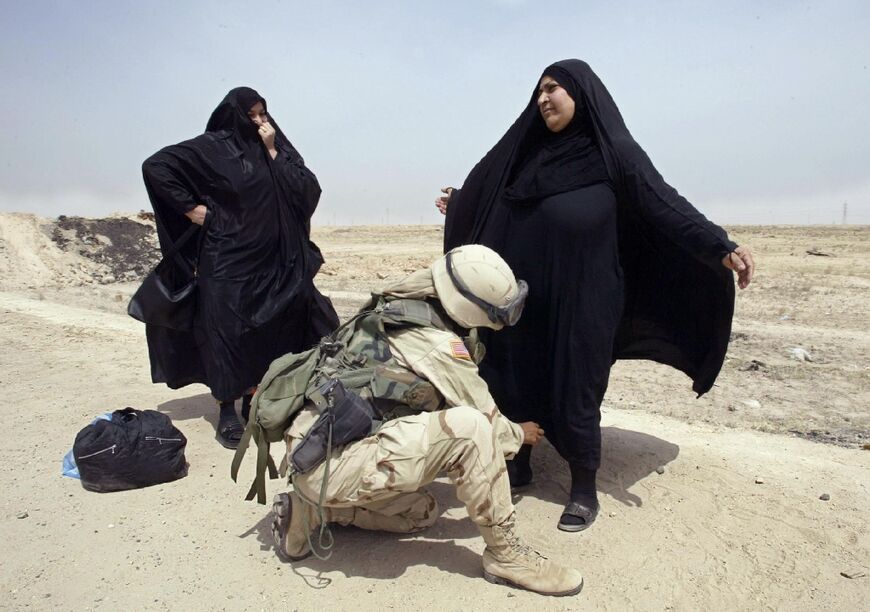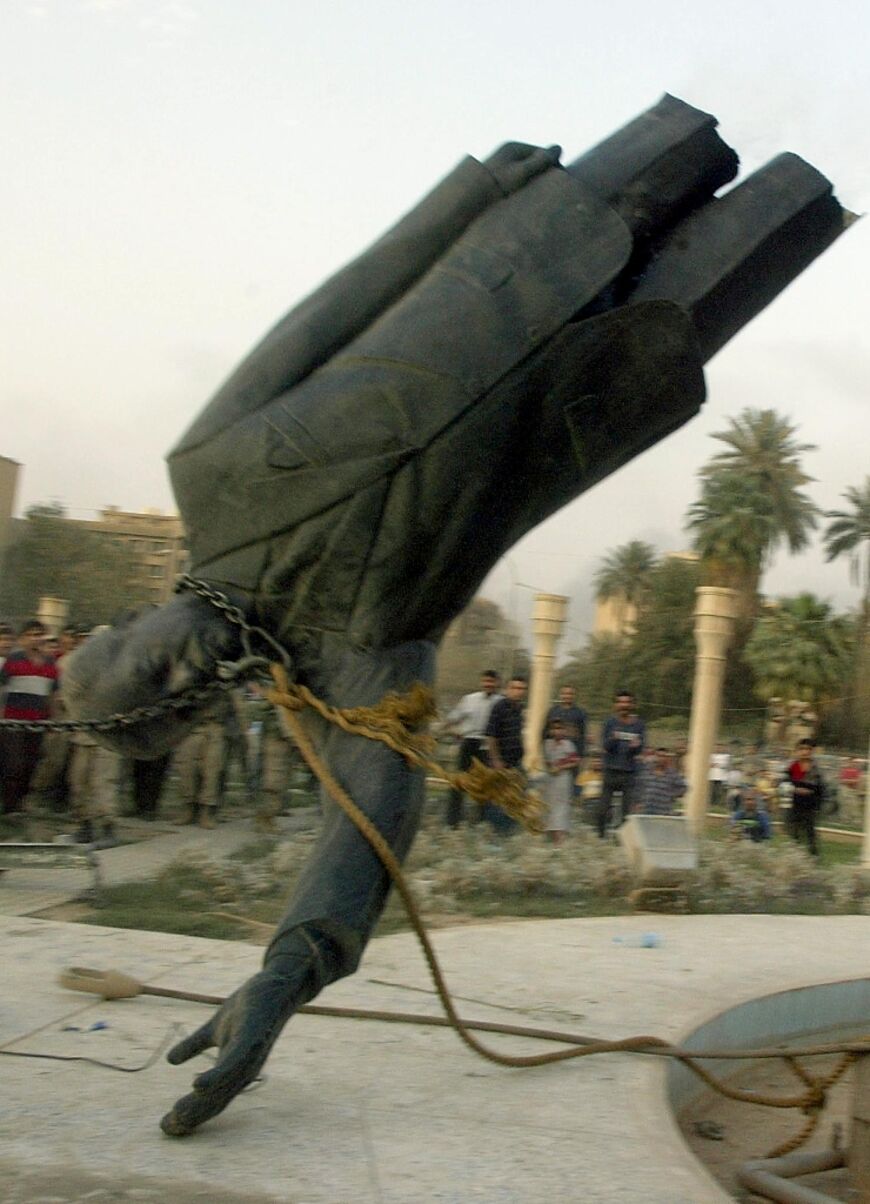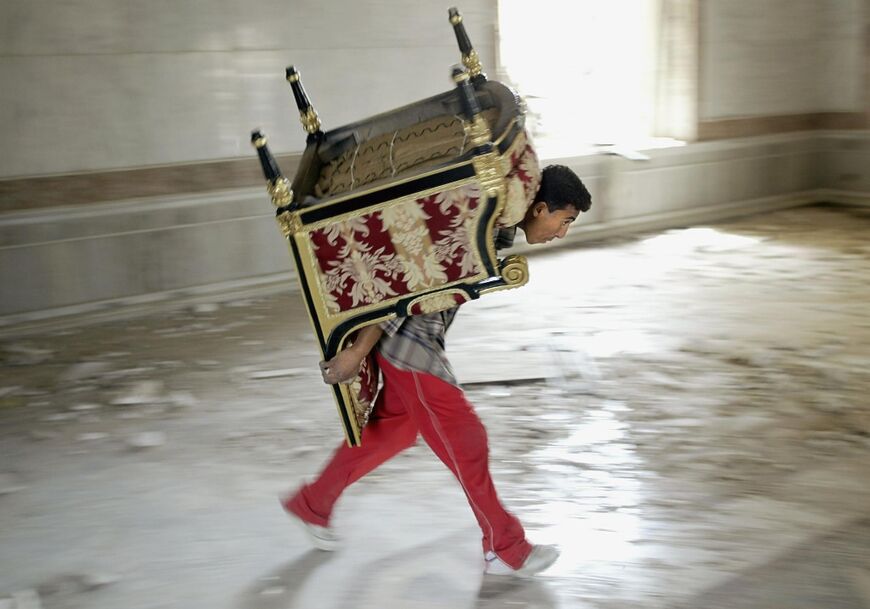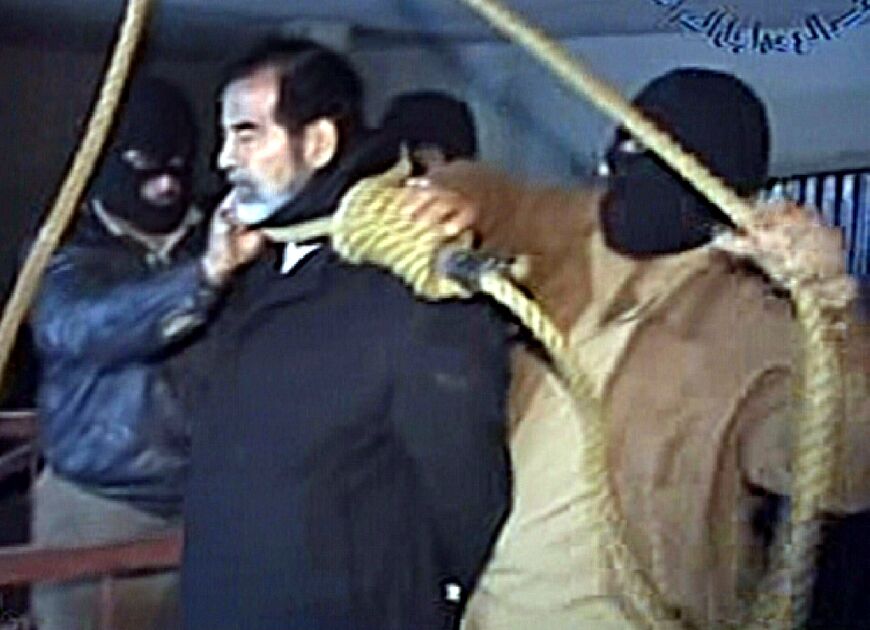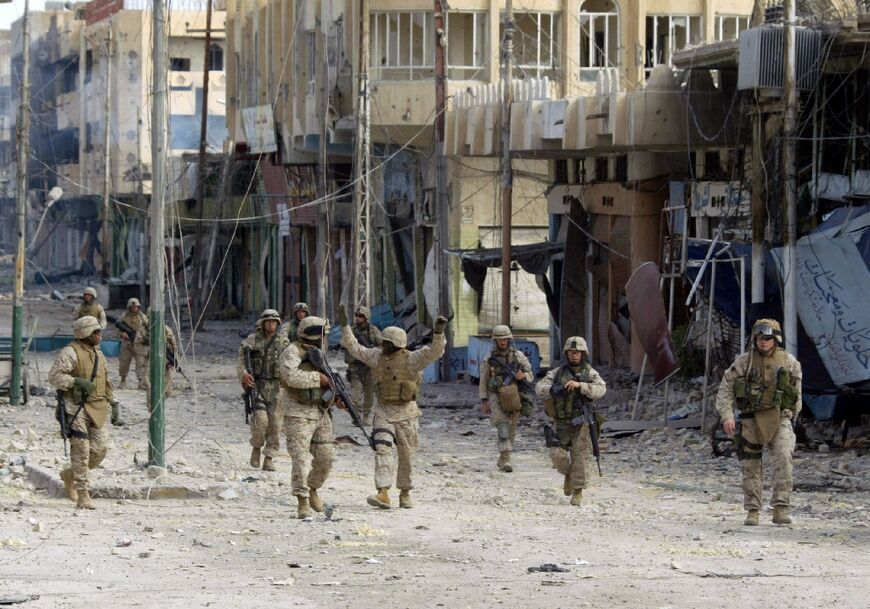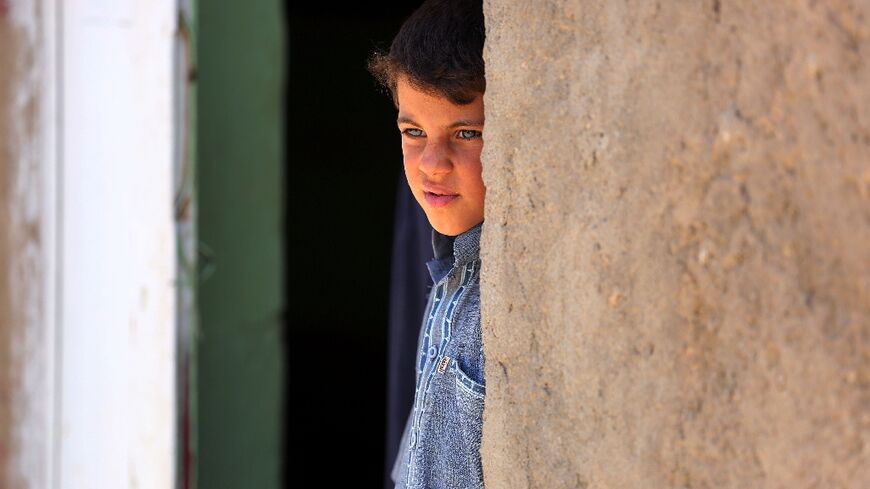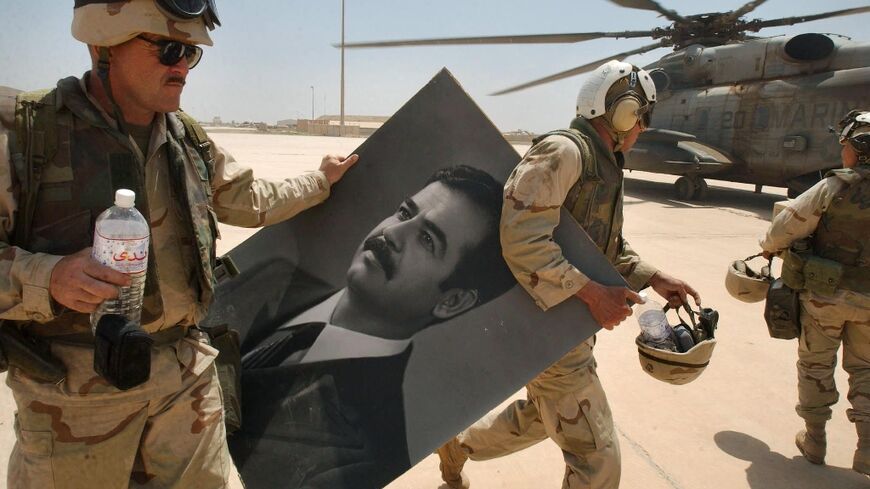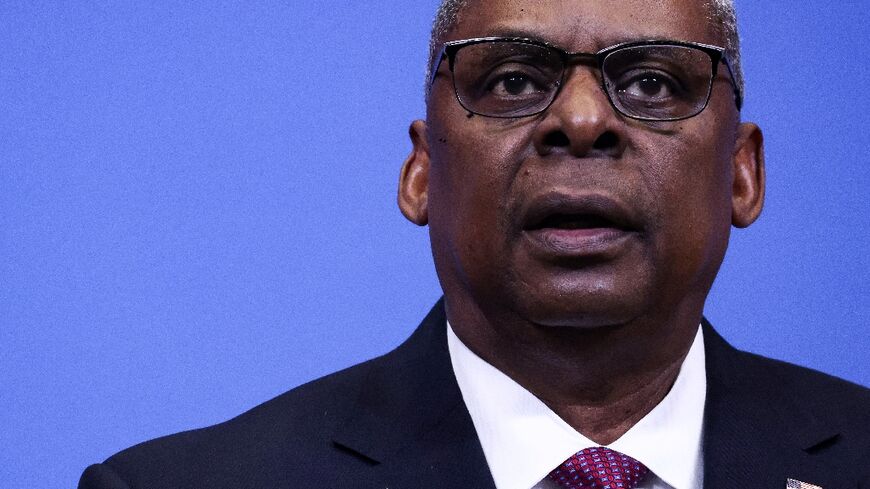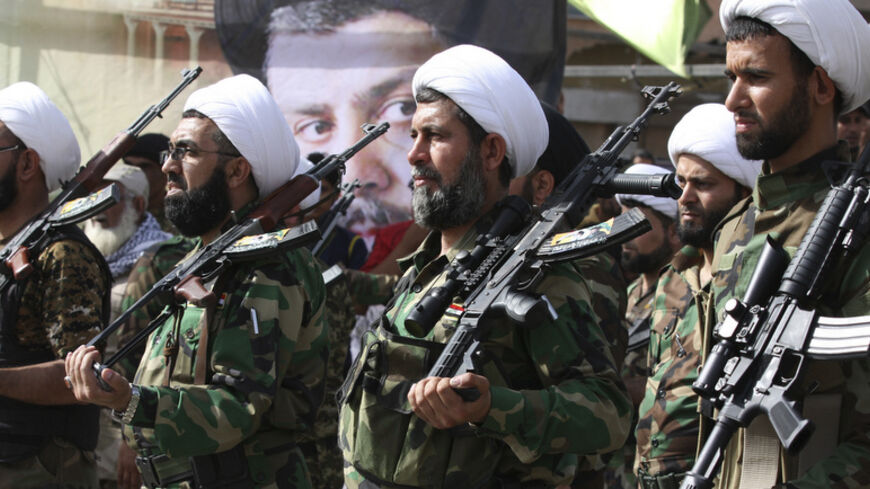Shock and awe: the toppling of Saddam Hussein 20 years ago

It took just three weeks for the decades-old regime of Iraq's feared dictator Saddam Hussein to fall in one of the most controversial foreign military interventions of modern times.
Then-US president George W. Bush began major air strikes on Iraq on March 20, 2003, claiming that Saddam's regime illegally possessed weapons of mass destruction, though none were ever found.
The coalition spearheaded by US and British forces then launched the major ground invasion, which climaxed with the fall of Baghdad on April 9, symbolised by the toppling of a towering statue of Saddam.
Over coming years, the war would bring many horrors -- from the gruelling urban battles of Fallujah to years of sectarian fighting and daily carnage to the Abu Ghraib prisoner abuse scandal.
AFP looks back at the dramatic opening weeks of "Operation Iraqi Freedom", which started a war that lasted nearly nine years, until the withdrawal of the last US occupation troops in December 2011.
- Cruise missiles at dawn -
Towards 5:35 am on March 20, the first US cruise missiles slam into the outskirts of Baghdad. It is less than two hours after Saddam spurned a deadline from Bush to go into exile or face war.
Deafening explosions reverberate around the capital and huge clouds of smoke billow into the sky.
Bush announces the start of the intervention on television, saying that "decisive force" will be used to disarm Iraq and overthrow its leader.
Saddam also appears on television. Wearing an olive military uniform and black beret, he vows that Iraq "will emerge victorious".
By evening tens of thousands of US and British troops have crossed into Iraq from Kuwait and begun their push through the desert north towards Baghdad.
Germany, France and Russia are among the many countries that condemn the invasion.
From Washington to San Francisco and from London to Berlin, hundreds of thousands rally in huge anti-war demonstrations, as Arab capitals are also rocked by a wave of protests.
- 'Shock and awe' -
On March 21, Washington unleashes a campaign of "shock and awe", raining bombs on Baghdad.
On March 25, about 4,000 US Marines pass through the southern city of Nasiriyah, a crucial gateway on the road to Baghdad.
- Baghdad airport seized -
On March 31, US troops engage in serious combat with Saddam's elite Republican Guard which has taken position 100 kilometres (70 miles) south of Baghdad near the Shiite holy city of Karbala.
On April 4, US troops seize Saddam International Airport and rename it Baghdad International Airport.
Iraqi television shows Saddam as still in control, flanked by bodyguards in a residential square, smiling broadly, accepting kisses on his hand and holding a baby.
But on April 7, US troops capture three of his Baghdad palaces.
On April 8, Iraq's information minister Mohammed Saeed al-Sahhaf -- mocked for his robust denials that Baghdad is falling -- calls on American troops to lay down their arms or face being burned in their tanks.
- Statue toppled -
On the afternoon of April 9, US tanks and troops meet little resistance as they move up both banks of the Tigris river that cuts through Baghdad.
US Marines use a military vehicle to help a crowd topple a giant statue of Saddam in Firdos Square, and jubilant onlookers rush to trample on it, chanting "Traitor!", "Torturer!" and "Dictator!"
- The aftermath -
With all state organs crumbling, including the police, Baghdad and much of Iraq are gripped by chaos and widespread looting. The national museum, which houses artefacts as old as 7,000 years, is not spared.
Over the following two days US-backed Kurdish Peshmerga fighters seize the northern cities of Kirkuk and Mosul.
Saddam's birthplace of Tikrit in north-central Iraq falls on April 14.
Bush on May 1 announces the end of major combat operations, aboard the USS Abraham Lincoln aircraft carrier returning from the Gulf, where he stands before a banner reading "Mission Accomplished".
By October Washington admits that it has found none of the weapons of mass destruction which had been the main justification for the war.
Saddam is captured in December in a hole in the ground near Tikrit, looking unkempt, bewildered and tired. He is tried by an Iraqi court and hanged before the end of the year.
The United States and Britain lost 139 and 33 soldiers respectively during the first three weeks of the intervention, according to their defence ministries.
The Iraq Body Count group says that in the opening phase of the war, more than 7,300 Iraqi civilians were killed.
By the time the war ended in 2011, the United States claimed nearly 4,500 deaths among its forces, while the Iraq Body Count group estimated that more than 100,000 Iraqi civilians had been killed.


